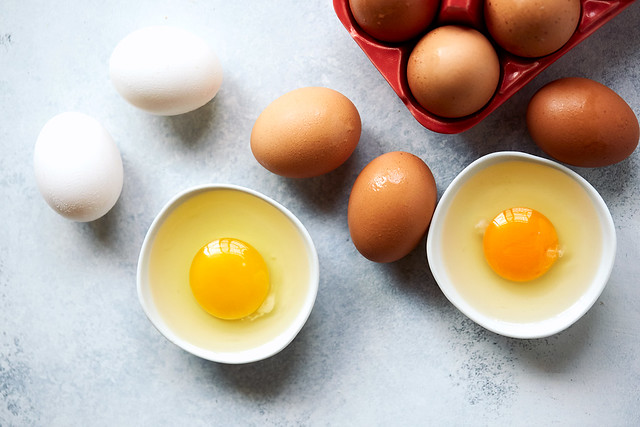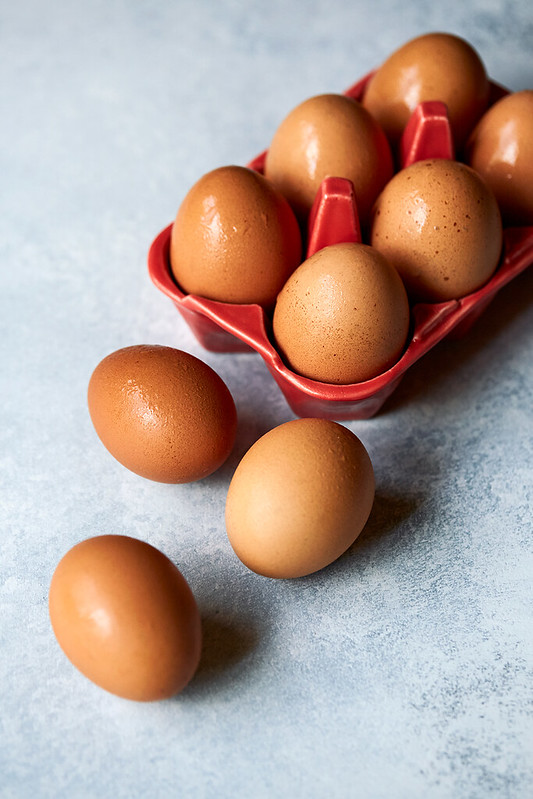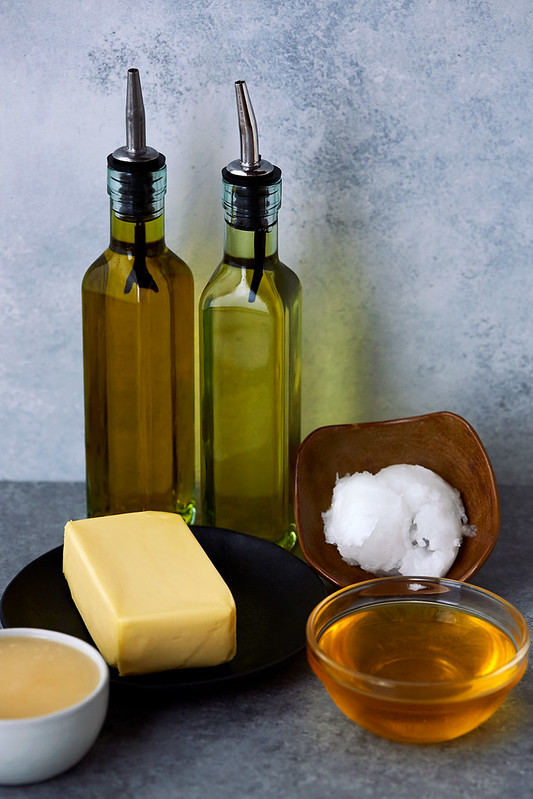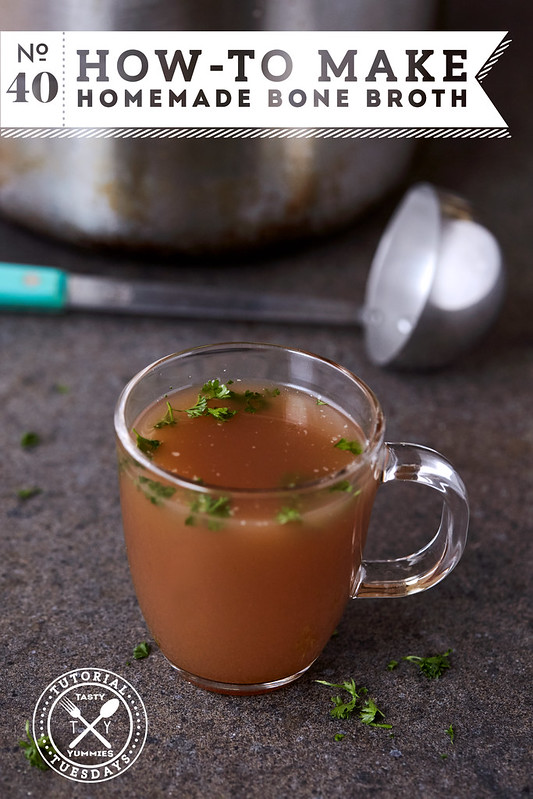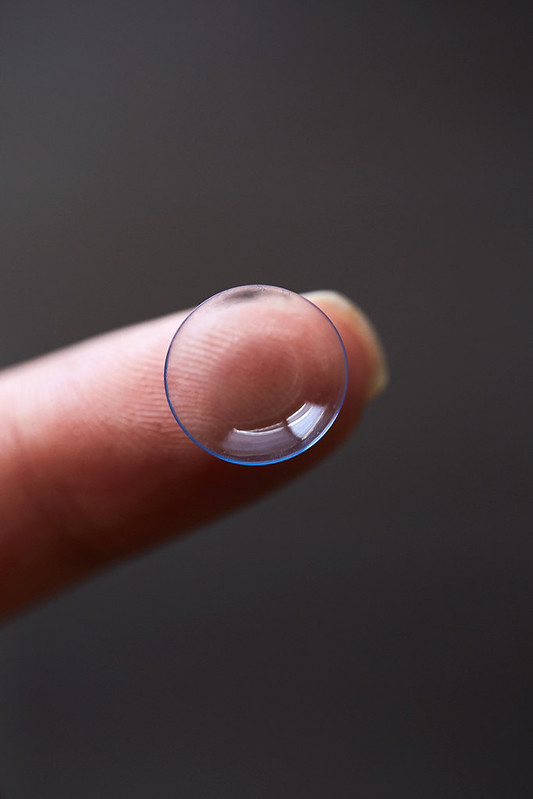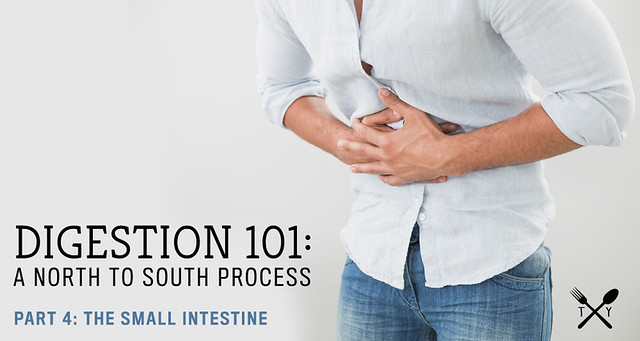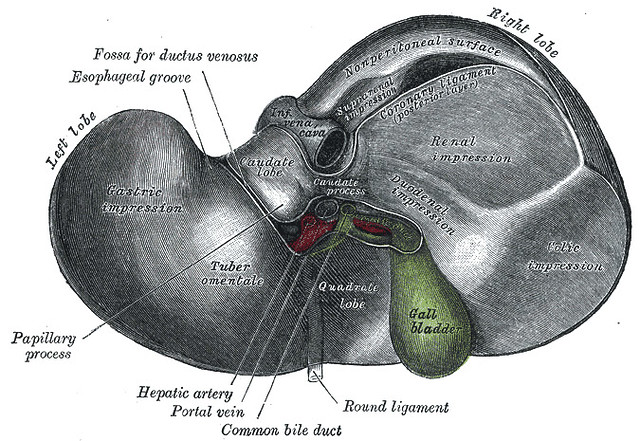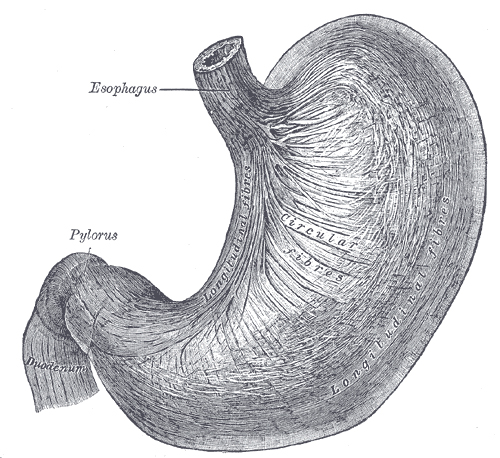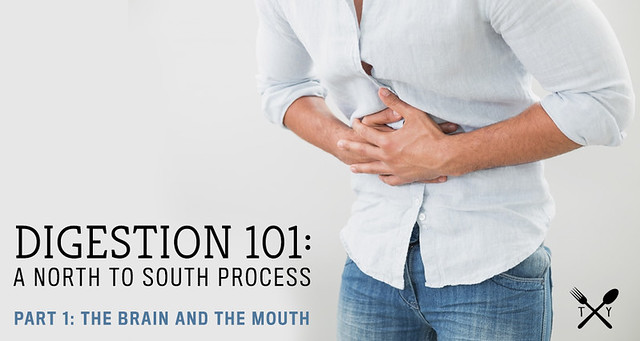-
The Basics of Blood Sugar
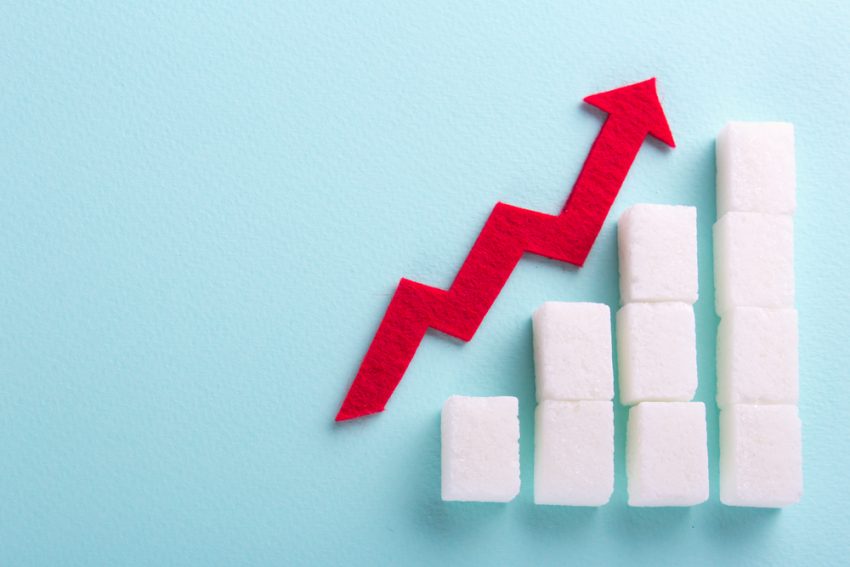
Are you concerned about your blood sugar? What is blood sugar and why does it matter so much?
It is possible, you have heard the term “blood sugar” before this article. Most people think of blood sugar and they think about the “blood sugar crash” we’ve all experienced before – feeling low energy, raging hungry and maybe even feeling shakey or experiencing those annoying tension headaches. What most people don’t realize is that this blood sugar low, it is almost always a result of a previous blood sugar high. The blood sugar spikes are what inevitably lead to those major crashes, but we are rarely talking about “blood sugar spikes” and what leads to them.
Before we get into the nitty gritty of blood sugar, it’s important to note that blood sugar isn’t just ‘a diabetes thing’ and it isn’t just an obesity thing. Every human, no matter their size, their age or their body type has blood sugar and any human can have blood sugar imbalances.
What is Blood Sugar / Blood Glucose?
Blood sugar, also known as blood glucose, is the amount of glucose present in your blood stream. Glucose in the bloodstream is affected most by the foods you eat. Your body creates glucose in the bloodstream by digesting these foods into a sugar that circulates in your bloodstream. Our body will then use that blood sugar for energy, then what isn’t currently needed for energy will get stored in the cells for later use.
Blood glucose levels are raised most significantly with carbohydrate foods, foods made from refined grains, breads, noodles and pastas, baked goods and pastries, sugar and sugary foods, but these carbohydrates also include grains in their whole state, starchy vegetables, fruits, etc. Yes, some of these carbohydrate foods can absolutely be a part of a healthy and well-balanced diet, it’s all about how much of these foods you eat at once and in what combination – this is what we need to be most aware of when it concerns blood sugar imbalances.
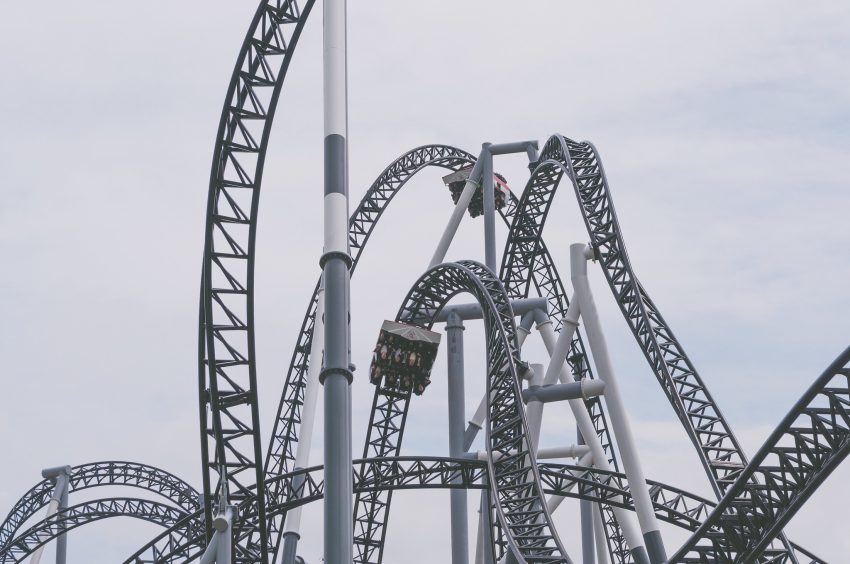
What Goes Up, Must Come Down
Where blood sugar (AKA blood glucose) is concerned, every single time you eat your blood sugar will rise, this is a natural, human response to food and energy production, how much so will depend on both the kind of food you are eating including the macronutrient profile of the food (which we will get to), as well as the quality and the quantity of that food and of course, the current health state of your body.
Unfortunately, thanks to the modern diet rich in simple carbohydrates (a diet common for many folks), the balanced, even blood sugar that our body has adapted to handle and manage with ease is far less common than not. A large influx of simple carbohydrates in a single meal, think pancakes with syrup at breakfast, a bagel, cereal, toast, a gigantic bowl of pasta for lunch, etc – this will lead to a swift rise in blood sugar levels. With a quick rise in blood sugar, our body sees this as an emergency that must be dealt with immediately.
How does the body deal with these blood sugar spikes? Let’s get into the basics of blood sugar regulation.
Blood Sugar Regulation
‣ When blood sugar rises this stimulates the pancreas to release insulin to help bring down blood sugar levels by storing away excess glucose as glycogen and triglycerides to be used later for energy.
‣ But insulin can overcorrect, causing blood glucose levels to drop too low (called reactive hypoglycemia), which the body also sees as an emergency.
‣ The central nervous system then signals the release of epinephrine and norepinephrine, followed by cortisol, to bring up blood sugar levels by converting glycogen and amino acids to glucose.Especially when we over-consume simple carbohydrates — which is very easy to do, for a variety of reasons including our genetic programming, the instant mood and energy boosts that we are often craving (thanks to stress, lack of sleep and blood sugar imbalances) and easy access to hyper-palatable processed foods — this same cycle can repeat over and over again throughout the day, eventually leading to blood sugar dysregulation, insulin resistance, possibly adrenal / HPA Axis issues (thanks to the excessive output of cortisol) and a myriad of symptoms associated with each of these.
The big players in the blood sugar system:
Most people don’t realize this, but the brain is the primary organ of blood sugar regulation, which in turn directs the activity of the following 5 primary peripheral organs and tissues via the:
- Pancreas
- Adrenals
- Adipose Tissue
- Liver
- Skeletal Muscle
AKA (the “PAALS”)
As well, the central nervous system works in tandem with these 5 primary hormones to help regulate blood sugar levels:
‣ Insulin – Insulin is produced by the beta cells of the pancreas and plays a very important role in regulating blood sugar levels. Insulin is essentially the key to unlock out cellular “gates” to let energy in, meaning the excess glucose found in the blood. The excess energy (glucose and fat) gets stored away in the cells of our liver, muscles, and fat tissue.
‣ Glucagon – Glucagon is produced by the alpha cells of the pancreas and it promotes the breakdown of glycogen to glucose in the liver. Glucagon balances insulin. When blood glucose levels drop sometime after eating this stimulates the release of glucagon for more energy. This cycle tells your cells to then release stored glycogen for energy to hold you over until your next meal. This cycle repeats itself throughout the day. Glucagon is essentially key that unlocks our cellular “gates” to let glucose and fat out of our cells.
‣ Epinephrine & Norepinephrine – Both epinephrine and norepinephrine are released when the body experiences a stress and it fears for it’s safety. Whether an external physical threat or internal, such as low blood sugar, these are part of the central nervous system’s fight or flee mechanism, designed to keep us safe. Epinephrine stimulates glycogenolysis in the liver, which converts glycogen to glucose, as well as lipolysis, which releases fatty acids from triglycerides stored in body fat and finally gluconeogenesis, which converts lactate, glycerol, and amino acids to glucose in the liver. All as a means to have the energy to fight or flee.
‣ Cortisol – Cortisol is a steroid hormone released when stress levels are high or blood sugar levels are too low. It increases the fuel (or energy) available to the heart and skeletal muscles in the same ways that epinephrine does, through stimulation of glycogenolysis, lipolysis and gluconeogenesis. However cortisol is slower to respond, taking minutes rather than seconds, since cortisol relies on the complex process of the HPA-Axis. (Another amazing topic for another day).
A really easy way to remember all of this: if blood sugar regulation were an orchestra, the central nervous system would be the conductor and the PAALS, the instruments.
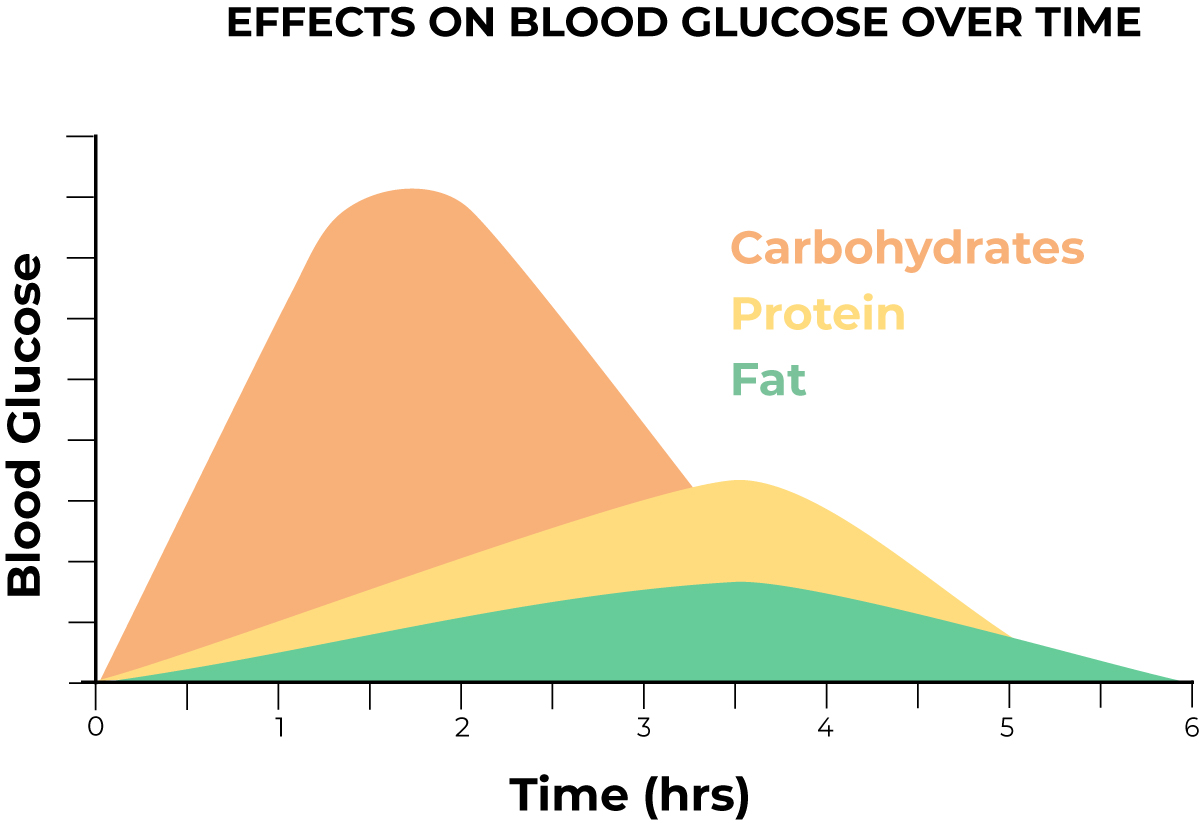
How the Food You Eat Affects Your Blood Sugar
Every single food we eat can be broken down into three macronutrient groups:
‣ Carbohydrates
‣ Protein
‣ Fat
Foods found in their whole food state are almost always dominant in one of these macronutrients over the others, but many foods contain a mixture. As mentioned previously, while all macronutrients will cause some increase in blood glucose levels, as you can see above carbohydrates will cause a larger increase than others, meaning the post meal crash that results will also be larger. Being aware of not only what types of foods you are consuming and how it affects your blood sugar is the first and easiest way to start balancing blood sugar levels and avoiding big spikes and huge crashes.
While you may be able to, at this point, do some simple reasoning and see how a meal of JUST carbs can cause an extreme blood sugar spike and crash, you may not still understand what foods fall under which categories, so let’s look at some other common foods.
Some examples of various foods and their dominant macronutrient group:
- Sweet potato: unrefined carbohydrate
- Boneless skinless chicken breast: protein
- Broccoli: unrefined carbohydrate
- Bacon: protein and fat
- Bowl of pasta: refined carbohydrate
- Apple: unrefined carbohydrate
- Eggs: protein and fat
- Steak: protein and some fat (more or less fat depending on the cut)
- Spinach: unrefined carbohydrate
- Whole Grain Rice: unrefined carbohydrate
- Avocado: fat and some carbohydrates
- Beans: unrefined carbohydrate and some plant-based protein
- Ice cream: refined carbohydrate and fat
In nature, carbohydrate-rich foods, in their whole food state almost always contain significant amounts of fiber. The fiber found in unrefined carbohydrates will actually slow down the effects on blood sugar as compared to a refined carbohydrate like a pastry, baked good, bread, pasta, juice, dessert, etc. which often have little in-tact fiber remaining. While fiber itself is a carbohydrate, it should not cause an increase in blood glucose or insulin as it is not digested by the small intestines and instead they make it to the large intestine where they are broken down by bacteria. In some cases fiber can actually decrease glucose and insulin levels. Fiber can been shown to improve insulin sensitivity, decrease heart disease risk and foster beneficial bacteria in our guts. Another benefits to fiber is that it “bulks up” and helps you to feel satiated and full.
In this same way when we combine our whole food carbohydrates with protein and fats, which we will get to in just a moment, the fiber found in whole food carbohydrates can provide an additional blunt to the blood sugar spike we would get from the carbohydrates alone. When we refine foods away from their whole food state, grains made into flour for baked goods, fruits that get juiced, sugar that is stripped of any nutrients, we are taking a direct hit of sugar to the blood and you know what comes next.
Added processed and refined fibers added to packaged and processed foods aren’t exactly the same as the in-tact fiber found in whole, unrefined foods as they are found in nature. Often these products advertised as low or no carb (because of the net carb approach) and they will often be loaded up with fibers, but it doesn’t mean these products are a good choice. Fibers added to processed foods like these may not cause the same response in the body that fiber found in whole foods will. Meaning it may still cause a glucose and insulin response and in some cases it may also cause some aggressive digestive issues. The FDA is currently investigating many of these “false fibers”.
PLEASE READ THIS AND THEN READ IT AGAIN:
Nutrient-dense, non-starchy vegetables like broccoli, spinach, cauliflower, kale, Brussels sprouts, cabbage, asparagus, mushrooms, peppers, zucchini, celery, cucumber, eggplant etc etc – these foods, while they are certainly more dominant in carbohydrates than protein or fat, they are so low in carbohydrates and so rich in fiber, vitamins, minerals and phytochemicals — that these should be consumed in unlimited abundance at every meal, without concern for blood sugar levels.
It’s also important to note that these main macronutrients are not the only foods / things that can cause a blood glucose spike. One randomized trial study showed that caffeinated coffee can impair the body’s ability to manage dietary glucose, resulting in higher blood sugar levels.1https://academic.oup.com/ajcn/article/87/5/1254/4650389 so it is important to always stay curious. In part two of this series we will be talking more about these other factors.
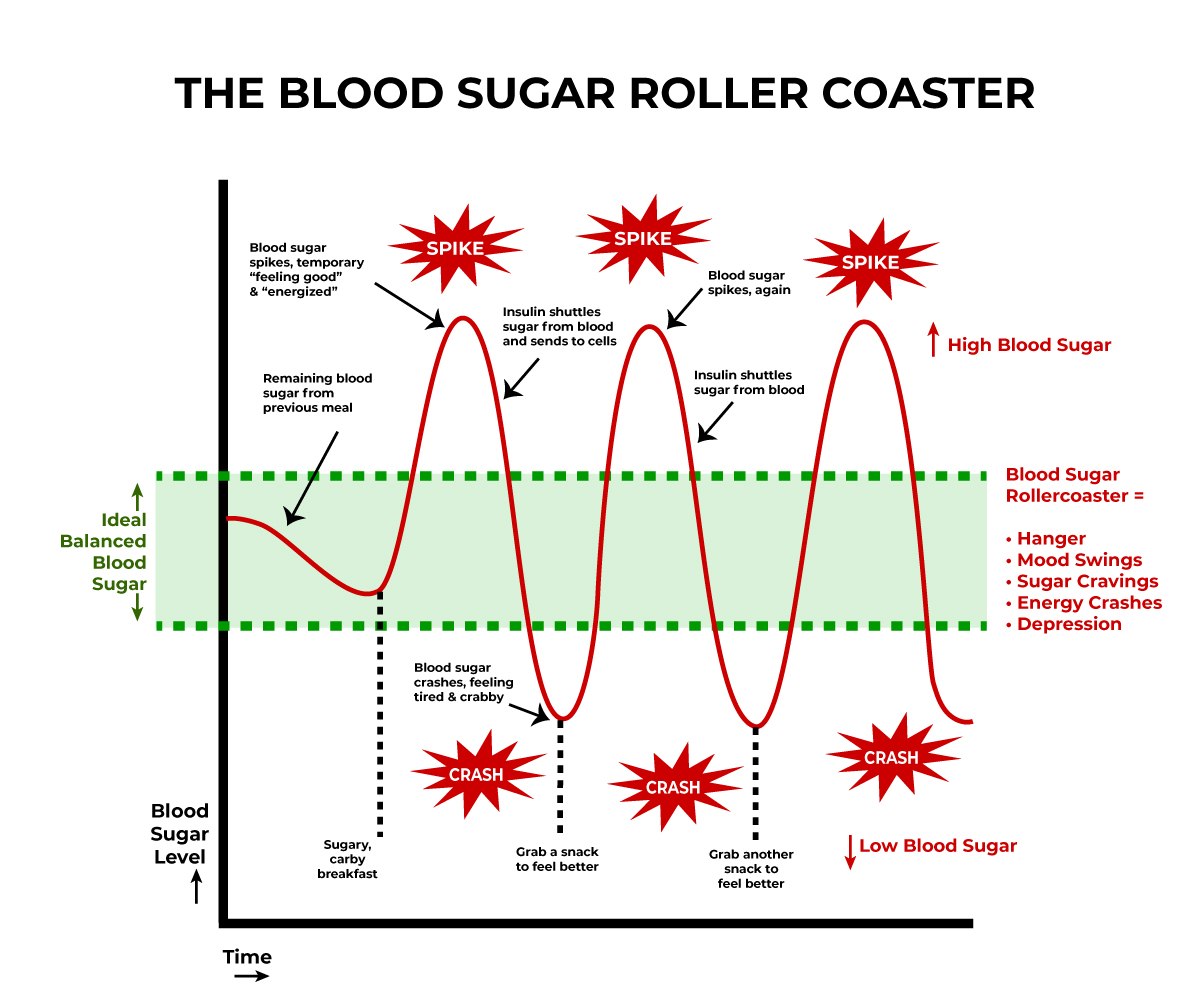
The consequences of constantly eating high sugar and high carb foods
As you can see, starting the day off with a carbohydrate-rich breakfast sets the tone for the day right out of the gate with a big blood sugar spike. Then comes the drop and if your choice for a snack, for a quick jolt of energy to bounce back is carb or sugar rich, you can see how the cycle continues. Your first meal sets the tone for the day and having balanced blood sugar levels all day means controlled energy levels, balanced moods, less cravings, no crashes or headaches and you aren’t continuously chasing your hunger.
How to Get off The Blood Sugar Roller Coaster – What Can You Do?
‣ Eat Enough Healthy Fats and Quality Proteins
Fat and protein have very little affect on blood glucose levels, compared to carbohydrates. Protein and fat also blunt the insulin release from the carbs on your plate. Protein and fat also send signals to your brain that you are full via important hunger hormones that help you avoid overeating. At every meal, prioritize a quality protein on your plate first, be sure you are including some healthy fats (read more about health fats here) if the protein you are eating is lean and doesn’t include enough on it’s own and fill the rest of your plate with nutrient-dense, colorful, in season non-starchy veggies. Dark leafy greens are one of my favorites for lots of important nutrients and fiber.
‣ Reduce Your Refined Carbohydrate Consumption and Avoid Excessive Sugar
Focus on quality of carbohydrates, balance of macronutrients (carbs not being the dominant), bio-individuality, everyone needs different amount of carbohydrates. Prioritize nutrient-dense whole food carbohydrates, think of a food that you could eat that you can imagine growing in nature, exactly as it is on your plate. These foods should be prioritized as your source of carbohydrates over refined carbohydrates and sugar-rich foods. The amount of carbohydrates each individual may need will depends on many factors, hormone health, HPA-axis health, age, gender, activity level, etc. If you determine that you do want/need to include more carbohydrate-dominant foods in your day, I recommend saving your starchy-veggies or carbohydrate-rich foods for your last meal of the day, this way, any drops in blood sugar are happening at a time of day where your energy would naturally be dipping to prepare for bedtime, any cravings that result won’t be a struggle. You will be asleep. Start the next day with a strong, protein and fat-rich breakfast so you can continue to keep things level and balanced throughout your day, with ease.
‣ Avoid Unnecessary, All-Day Snacking
Continuously eating, all day, will keep blood sugar levels either continuously elevated which means elevated insulin all day or it will be stuck in the loop of going up and down, all day. It’s not that snacking is inherently bad, but if you struggle with energy issues, if you crash halfway through the day, if you experience high highs and low lows that make you feel like you need to snack – this could be an indication you aren’t eating enough or properly at meal time or that your blood sugar is significantly imbalanced. Consider eating more at meal time and prioritizing protein and fat over carbohydrates and be sure you are eating enough. If you are eating protein and fat as the main focus of your meals and you are still feeling the need to snack all day, that this means you are likely not eating enough food. Focusing on both of these should help with the need to snack. If reducing your refined carbohydrates and sugar is a new way of eating for you, snacking may be helpful until your blood sugar levels are more balanced, so it is suggested that you consider protein and fat forward snacks when you you do snack. This post includes lots of options.
‣ Move Your Body
In our current, modern lifestyles where stress and sympathetic nervous system dominance becomes the norm, if we remain sedentary we the cortisol being released into our blood streams to keep circulating longer than it should. This can have detrimental long-term consequences but at the very least it can further dysregulate blood sugar levels. Physical movement can help stress management overall, but it can also help process out stress hormones that are present in the body more quickly, but movement is also an incredible method for using up excess blood sugar and increase insulin sensitivity. Even just one 30 minute session has been shown to improve insulin sensitivity by decreasing glycogen synthesis.2https://www.ncbi.nlm.nih.gov/pmc/articles/PMC3381815/
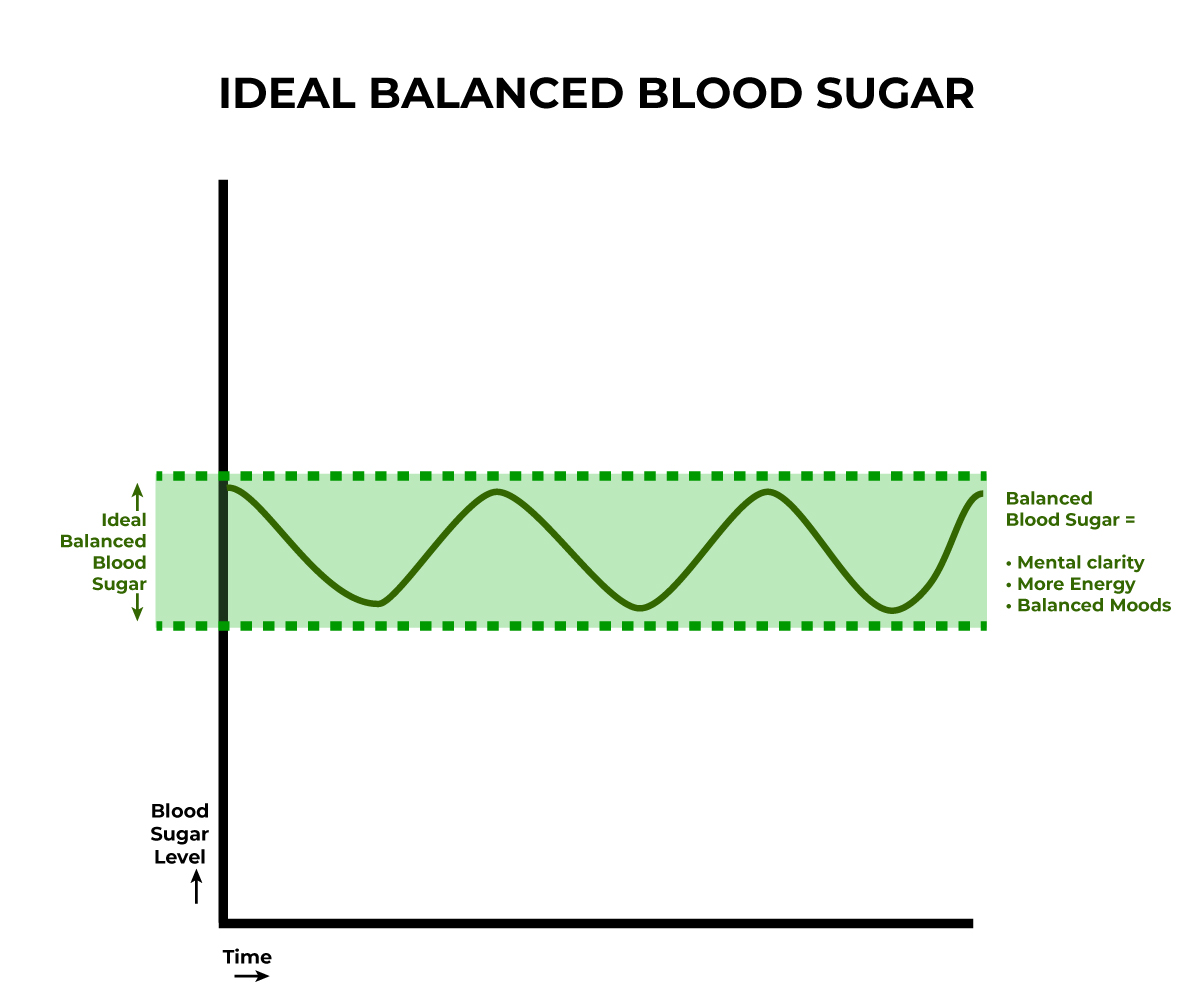
Looking for more support?
‣ Strong All Day Long
if you are experiencing daily energy crashes, hanger, cravings, mood swings and you are looking to make a few simple, easy-to-implement shifts right away, this 5-day program and 7-day meal plan are for you!! I am giving you the 5 big solutions I share with EVERY one of my 1:1 nutritional therapy clients, these shifts bring huge results with minimal efforts. There’s no diet, there isn’t a list a foods to avoid and nothing to track. You will learn how to create healthy plates of food, go more in depth on the various delicious quality proteins and fats to include, tips for meal planning to make eating easy, plus hidden sources of sugar and lots more. This is a focus on the foundations, simple approach to getting your blood sugar under control!! Learn more and get instant access to the program and your meal plan here.
‣ Keto for You
this program is designed to assist you in using a food-as-medicine, healing ketogenic approach to support your body is switching away from relying on sugar as it’s source of fuel. If you are the constant blood sugar roller coaster has resulted in metabolic dysfunction, an inability to lose fat, inflammation and joint pain, hormone imbalances and beyond and you are ready to get on the other side of these once and for all – this fully personalized nutrition program and masterclass will help you in finally taking control of your health and ditching the constant dieting roller coaster of on-again / off-again extreme restriction that never works. This 8 week program is full of customized nutritional protocols, supplement recommendations, 8 weeks of meal plans and recipes, weekly mindset practices, amazing expert guest teachers and in-depth learning so you can create a sustainable lifestyle that will be right for you. Learn more and sign up now here.
This program is designed to support you in using a ketogenic approach as a powerful intervention and healing tool to guide you in creating a sustainable fat-fueled lifestyle for yourself for long-term, so you can adjust and shift as life changes – so you can finally ditch the sugar fueled, blood sugar crashing, inflammation-causing approach that hasn’t been working for you. Head here to learn more and sign up. Enrollment is open for just a short time and the program will not be available again until later in 2020. If you aren’t sure if keto is the correct approach for you, you can watch this FREE online workshop Is Keto for You? to learn more or book a FREE 15-minute call with me and I am happy so answer your questions.
‣ 1:1 Nutritional Therapy and Health Coaching Support
If you are concerned there is more going on at a root cause level, possibly gut imbalances or pathogens, food sensitivities, complications from autoimmune disease or if you are looking for more direct 1:1 support including personalized action plans, lab testing and interpretations, supplemental support, if you are craving accountability and someone to help you dig deeper along side you, with nutritional support, lifestyle recommendations, mindset and mindfulness practices and more – working together one-on-one would be a really great option for you. You can apply to be a client here. Once I review your application, I will contact you about scheduling your FREE discovery call and we can decide if we are a good fit for one another.
PLEASE NOTE: Low post-meal blood sugar levels can happen to folks with normal fasting blood sugars, it can happen to someone who is insulin resistant and obviously in individuals with diabetes but it can also be a symptom of some types of Polycystic Ovarian Syndrome – with all of these scenarios, this type of low blood sugar is referred to, as mentioned above, reactive hypoglycemia. In most cases this type of low blood sugar can be treated with a lower carbohydrate approach, to balance blood sugar levels. Medically diagnosed hypoglycemia is different and should be treated with a health care practitioner, if you experience consistently low blood sugar levels and you are a diabetic on medication you may need to work with your doctor on changing your medication levels to match your carbohydrate intake. Ongoing low fasting blood sugar levels can also occur in people who do not have diabetes and can be the result of a serious underlying medical condition. If you have continuously low fasting blood sugar levels and do not take diabetes medications, you should see your healthcare provider.
Please Stay Tuned for Additional Articles in this Series Where You will Learn:
The Long-term Consequences of Imbalanced Blood Sugar
How Stress Affects Blood Sugar
Other Factors to Consider that Could Raise Your Blood Sugar
and More.
Got questions you want to be sure get covered in future articles, leave your comments below.
References
1. ↑ https://academic.oup.com/ajcn/article/87/5/1254/4650389 2. ↑ https://www.ncbi.nlm.nih.gov/pmc/articles/PMC3381815/ -
5 Tips for Your Sugar Detox: How to Fight the Cravings, Stay Sane and Feel Free.
Whether or not you have committed to a structured sugar detox or you are simply looking to cut your intake of sweets and manage the cravings – today, I am sharing my 5 simple tips for your sugar detox. It’s not about dieting or crazy rules or restrictive eating as punishment, it’s just about being smart, prioritizing your health and feeling in control of the cravings!
Hey Sweet Thing! Are you addicted to sugar? Do you feel trapped by your constant cravings for something sweet? If you want to break the addictive cycle to sugar, it’s totally possible, it’s not actually as bad (or as hard) as it seems and feeling like you are in control of your cravings – is truly priceless!! Trust me. Removing the addiction to sugar isn’t about extreme restrictions forever or never ever having a sweet again, rather this is about loving your body and your health enough to want to feel your bet, to get yourself out of the constant blood sugar roller coaster and to break free of the sugar cravings that hold you hostage!
I know pretty much all of us can relate and have been there, but I find it’s especially challenging for folks after the holidays. Whether or not you have committed to a structured sugar detox or you are simply looking to cut your intake of sweets and manage the cravings – today, I am sharing my 5 tips to drop the sugar – cuz friends, you are sweet enough already – haha!
Why Cut Back on Sugar?
Sugar at it’s best lights us up, it gives us pleasure in times of stress, depression and pain, but we all know those feelings are short-lived. At it’s worst, sugar in excess can make you feel sluggish, bloated, anxious and crabby – so why do you still crave it? Because it’s addicting. It triggers the same reward and pleasure centers in the brain, that some narcotics do. It’s addicting. Is sugar as bad for us as cocaine? NO – I am certainly not implying that, but I think it’s important to recognize that sugar definitely has the ability to have a very strong hold on us and it’s not our fault.
Excessive Sugar Can:
- raise our blood sugar (blood glucose), which requires our body to constantly be releasing insulin to manage, then we have the crash – it’s highly taxing to the body to be in this constant blood sugar roller coaster of up and down and it can affect other systems of the body, as a result.
- lead to weight gain from overeating, along with elevated triglycerides, insulin resistance, and other indicators of metabolic syndrome. Refined sugar has also been shown to reduce immune system efficiency.1https://www.ncbi.nlm.nih.gov/pubmed/4748178, https://www.sciencedirect.com/science/article/pii/S0271531784800573.
- cause elevated blood glucose levels which has been shown to promote cancer growth 2https://www.sciencedirect.com/science/article/pii/0006291X85919308.
- feed bad gut bacteria. When we eat a high-sugar diet, the undesirable bacteria thrive and start to grow out of control, causing a waterfall of health issues, while our beneficial bacteria dwindle in number.
- cause inflammation which can affects our entire body, but very specifically our immune system and our digestion.
Does this mean we can’t have ANY sugar ever, nope! I am not insinuating that extreme, unattainable level of perfection with our eating, but of all the foods available to us, I would argue that sugar is the most pleasure-enducing and therefore the hardest to moderate. Limiting yourself around the sweets isn’t a problem with you or your willpower, it’s a problem with the sweets! They are hyper palatable and designed to make you want more. So, what can we do to break the addiction to sugar and begin to feel like we are the ones in control, rather than the sugar?!
References
1. ↑ https://www.ncbi.nlm.nih.gov/pubmed/4748178, https://www.sciencedirect.com/science/article/pii/S0271531784800573 2. ↑ https://www.sciencedirect.com/science/article/pii/0006291X85919308 -
How To Create a Daily Gratitude Practice
How To Start a Daily Gratitude Practice
Rather than one single day centered around gratitude, I want to invite you to make practicing gratitude a daily habit.
And what better way to implement your new habit than to practice, practice, practice. You can experience true abundance and contentment, in just a few minutes a day.
The keys to creating a daily practice, that is effortless, sustainable and part of your routine is to understand how to set yourself up for success.
Below are a few tips to implementing a your new daily gratitude practice, plus how to make it a daily habit and the benefits of doing so.
-
How-to Refresh and Hydrate Your Skin with Homemade Infused Face Mists
Looking fresh faced and glowy in the dead of summer is challenging. With the heat comes the drab makeup and the blah, dehydrated skin. In the sweltering dead of summer heat, nothing feels quite like a refreshing face mist. Spritzing your face with a homemade infused face mist is cooling and refreshing on a hot day, post workout or as a pick-me-up for that mid-afternoon drop off.
Face mists make your skin less dull and more dewy, providing additional benefits from the botanicals you select for infusing. Traditionally with facial mists that are hydrosol distillations that include the essence of botanicals and endure an involved distillation process. While some store-bought versions use this method, many can also contain synthetic fragrances, alcohol, or other ingredients that can cause dryness and irritation.
-
What You Need to Know About Eggs – Pasture Raised vs Cage-Free vs Free-Range, etc
Selecting eggs these days can be a bit overwhelming. There’s Free-Range, Organic, Caged, Cage-free, Pasture-Raised. There are brown eggs and white eggs, Omega-3 enriched eggs. Not only are there significant differences in the animal care with these various types of eggs, but in addition, depending on what the hens themselves ate and their access to sunlight, the end result in the eggs we eat, also show drastic nutritional differences, as well. Read on for What You Need to Know About Eggs. Let’s get right to it:
Look at the difference in the color of the yolks from a conventional egg (left), to a pasture-raised egg (right).
The Various Labels – What Do They Mean
-
Don’t Fear the Fat // The Basics
Why Are We Talking About Fat?
The reason I write this post, is that even though, for so many us, we have woke to this knowledge and have worked hard to reframe our approach to nutrition and no longer fearing the fat, we still have so much work to do. After many decades of low-fat propaganda, the “fat makes you fat” rhetoric is still so deeply ingrained in the collective psyche. Many people STILL greatly fear fat, even though study after study shows that fat is not only harmless 1http://ajcn.nutrition.org/content/early/2010/01/13/ajcn.2009.27725.abstract but that it is in fact, quite necessary to many important functions in the body. I myself see this fear weekly in my nutrition clients, all over the internet and in my social feeds, at the grocery store, at restaurants, at the gym, etc and of course, all of the many side effects of low fat eating – we HAVE to change this dialogue!!
The Basics
It is beyond challenging to decide where to even start on such a huge, huge topic. Chatting about dietary fat is a big undertaking and we are going to merely just scratch the surface with this initial post, decoding the myths and where the fat fearmongering began, along with the crucial reasons we need fat in our diet. So, let’s get to the basics.
First and foremost you need to know that fat is a necessity in our bodies. This vital macronutrient provides building blocks for the brain, hormone and cellular membranes throughout the body, it is essential for the absorption of fat-soluble vitamins like A, D, E and K and it is deeply hydrating!
By adequately increasing my healthy fat intake, more than any other change I have made in my lifestyle and diet, I have personally seen profound affects on my health, from my digestion to my skin including chronic hormonal and cystic acne, from my moods to my ability to concentrate, hormonal imbalances to libido (YUP!). Fat is a powerful anti-aging food, both internally and externally. Consumed as part of a healthful diet, fatty acids (the building blocks of fat) help stabilize blood sugar – allowing your body to release fat, protect it’s lean muscle, and surge with energy. When our focus is on creating meals that are rich not only in healthy fats, but also quality well-sourced proteins and fibrous green leafy veggies, we can thank especially the healthy fats for keeping us satiated. Staying satisfied for longer means so you won’t find yourself searching for the junky, processed snacks in between these healthy, whole food meals.
References
1. ↑ http://ajcn.nutrition.org/content/early/2010/01/13/ajcn.2009.27725.abstract -
Cooking Fats and Oils: Which to Include and Which to Avoid
Cooking Fats and Oils: Which to Include and Which to Avoid
Fats and oils are a necessary part of cooking, but using the right ones are down right essential to living a healthy and vital life. Just like rest of what we eat, a good rule of thumb with fats and oils is to always opt for organic and you should avoid overly-processed, highly refined fats and basically anything that your grandmother wouldn’t recognize as traditional food (i.e. basically ALL highly-refined vegetable and seed oils) – but to be frank, there is a lot more to the story! Not only do the types and quality of fats and oils matter – but so does their proper use. Honoring the various molecular structures of the different fats is the best way to insure that you are using them appropriately, without causing damage to the fats and in turn, negative affects on our health.
Here is a quick resource guide including the various uses for each:
-
New Year Release Ritual
2016 will go down in the books as an intensely challenging and pivotal year for a great deal of us. If you too are counting down the days to starting over in 2017 with a vow to change and have a better year, let’s reflect on these resolutions and how to make them last. Mentally we need that idea of pressing a magic reset button in hope that we can leave our baggage behind in a four digit number and wash our hands of it. By the end of the year it’s as if our candle has been burned at both ends and we grasp at the belief of starting over at the stroke of midnight.
I have learned through my own ritual work with the moon and seasons that everything is on a cycle and having our own practice to mark the beginning and end of them can help you manifest things you want to attract and release that which no longer serves you. The moon expands, gets full and bright and then retracts until its dark only to start the cycle again. In the fall, the leaves die and fall off of the trees, everything retreats and goes within for Winter and emerges with new life and birth in Spring. We are not immune to these natural cycles. It’s why we focus so much on the New Year! But before we can make room to bring new things into our lives, we must release the old and clear out the clutter. I am going to help you set this intention for release through a simple ritual I have experienced results with.
-
Simple Self Care
I am excited to bring you the first post in an ongoing series from Brook Albrigo, a Shamanic Reiki Master and very dear friend of mine. You have heard me speak previously about the very important roles that reiki and the subtle body have played in my healing journey, I have also shared very specific details of healing sessions with Brook. Brook will be joining us here monthly to share more about reiki and the strong influence in which energetics can play in healing, including simple tips to restore balance and promote vitality and wellness.
– – – – – – – – – – – – – – – – – – – – – – – – – – – – – – – – – – – – – – – – – – – – – – –
When will the rollercoaster of emotions from the past few weeks stop? The severe divisions, the resulting solidarity being shown in protests and by people vowing to stand up for one another, the complete shock of realizing how profoundly the beliefs of others can potentially affect us. If the current events have left you raw, breaking down crying at the grocery store, or fumbling for control of your anger or incredulousness perhaps what I have to share can help you get your bearings amidst absorbing other peoples’ emotions and amplifying this difficult time. The beauty of this is that we are all waking up to just how deeply connected we are to one another.
In hindsight, as I was in Yosemite national park a week before election day, the powerful flow of the storm fed waterfalls and rivers were a premonition. I gathered strength from the waters, mountains and trees not knowing I was being prepared for the events that were to follow. As a shamanic healer I use a technique known as Nature divination- the practice of connecting to elements in nature to receive guidance. Messages come from particular nature spirits -like trees, plants, mountains or waterfalls. We believe in shamanism that everything has a spirit living inside of it that we can communicate with if we learn how to listen. On my solo adventures on hiking trails, I gave attention to each rock, tree and animal; tuned to receive messages. Lucky for me, I was alone and spared the curiosity of fellow hikers wondering why I was talking to a tree!
I was intensely concerned with the violence and conflict at Standing Rock in North Dakota and while the guidance I sought was regarding that situation, I found it to be relevant to what we are experiencing today as a human collective and have felt comforted by receiving this knowledge. When we feel helpless, sometimes that is a sign that we need to re-center and remember that we are part of a higher calling, a bigger picture, and we should listen to our guides that are right in front of us everyday. This is how I was able to maintain the past week and be of assistance to others.
I realized the tools and techniques needed to ground and care for ourselves may get lost in the daily shuffle of life but they are always there and I have created a simple list of self-care rituals to help us all through. We just need to decide our well being is worth making the time for and be willing to get a little bit out of our comfort zones. -
4 Reasons to Avoid Vegetable and Seed Oils
4 Reasons to Avoid Vegetable Oils. Vegetable oils are NOT healthy! Read on to discover the 4 biggest reasons to avoid these terrifying, toxic fats!
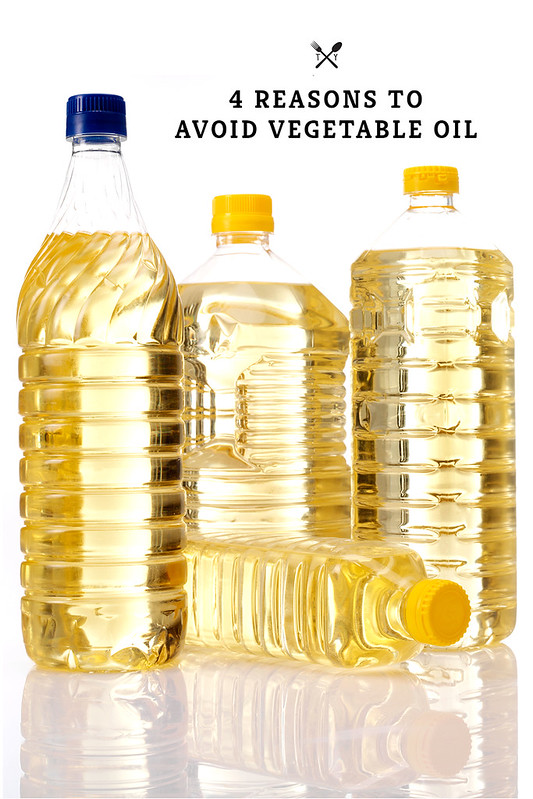
On the regular I find myself saddened and unpleasantly surprised by the lack of easily accessible, reliable information and data concerning food, nutrition and health. Truthfully, looking back, it’s amazing how little I myself knew, before I started down this long, self-initiated, ongoing path of nutritional education and empowerment of the past 10+ years. I am often reminded these days that I live in a bubble of sorts, surrounding myself virtually and otherwise with bloggers, healers, nutritionists and content creators whose lifestyles mirror my own. Reading books, listening to podcasts and following doctors and researchers creating and sharing important information and research about health and nutrition. I tend to forget and maybe I even take for granted, how much I do know and often I find myself making sweeping assumptions that everyone else knows most of it, too. I know for so many of you this post and this information is old news, it’s a rerun, you’ve heard it before. But if this post reaches even one new person, if I can send my new nutritional clients, who are still cooking with vegetable oils, here to learn more, then it’s a success!
As I enter the homes of my nutritional clients, as well as my close friends and family members, the number one thing I see among their food choices, that I immediately want to remove from their pantries and toss aggressively into the garbage: is vegetable and seed oils. In my opinion, vegetable oils are far worse than any overly refined carbs, white sugar or high fructose corn syrup. This deadly, Frankenstein-eque, lab-created “food” (if you can even call it that) is wreaking more havoc on people’s health than possibly anything else and sadly it’s being overlooked by so many. Much of this comes from Western medical practitioners who are woefully uneducated in nutrition or those whose nutritional education is sorely dated, built on antiquated and debunked health myths of previous generations. Or maybe it’s the fact that big food industry in our country has a large stake in corn and soy production and these have become, by far, the cheapest crops we are growing, thanks to government subsidies. Take a look at most packaged and processed foods and I can almost guarantee you will find one or both of these foods somewhere on the label.
The edible oil industry in our country, “Big Ag” and their marketing “geniuses” sought to demonize tropical oils and other saturated fats and in turn, in the same breath to promote their own vegetable oils, like corn and soybean oil. This great movement toward the excessive use of polyunsaturated fats and the demonization of saturated fats came with the advent of the “Lipid Hypothesis” — which featured fraudulent research made by a terrible scientist named Ancel Keys who made unsubstantiated claims that saturated fat and cholesterol were the cause of heart disease and ignored research and data that didn’t support his argument. We can see how well all that has gone!
The fats used in this study were hydrogenated, processed fats, known to be extremely irritating to the body, particularly the vascular system. Cholesterol acts as a healing agent to repair and protect the arteries and veins. Therefore, the more irritation, the more cholesterol will mobilize to save the day! Research now shows us that dietary cholesterol intake has VERY LITTLE to do with over all cholesterol levels, so this part of the theory was off target as well. Today, the Lipid Hypothesis continues to be promoted by most medical professionals and pharmaceutical companies, as well as the modern food processing giants, who profit from such flawed research. Saturated fatty acids from healthy sources nourish the vascular system, enhance immune function, protect the liver from certain toxins (including alcohol), aid in calcium absorption, and increase cellular membrane integrity. Keep in mind that heart disease was considered a rare condition before the 1920’s, but spiked dramatically from 1910 to 1970 as Americans began consuming less saturated animal fats and increasing amounts of vegetable fats in the form of margarine, shortening and adulterated, refined oils of all types. Our not-so-distant ancestors consumed healthy sources of saturated fats each and every day with no adverse health effects whatsoever! 1Fats: Safer Choices for Your Frying Pan and Your Health By Caroline Barringer, CHFS, NTP
After going through the Nutritional Therapy program at the NTA to become a certified Nutritional Therapy Practitioner I have found myself more inspired than ever to want to help people, to share what I know and to do whatever I can to help make a change in our health, our very broken food system and to empower people to make the very best choices for themselves and their families. So let’s start with one of the most important topics: 4 Reasons to Avoid Vegetable and Seed Oils!
What are Vegetable Oils?
Vegetable oils are oils that are extracted from seeds, germs or beans, such as corn, sunflower, safflower, soybean, or rapeseed (canola oil), etc. Non existent until the early-1900’s, vegetable oils are one of the most unnatural “foods” you can find. Vegetable oils are PUFAs, which stands for Poly-Unsaturated Fatty Acid. In chemical terms, that means that the fatty acid has more than one (poly) double bond in the carbon chain. They’re unsaturated because they’re missing out on what saturated fatty acid has — hydrogen atoms. In a sense, that makes the bonds sort of incomplete. So, imagine a chain of links that are sort of missing a joint or two, on each and every link — it wouldn’t be very strong or stable. These messed up and broken chains make for highly unstable fats that are prone to oxidation in the presence of heat and light, during cooking, sitting on the shelf in the grocery store or in your kitchen pantry and even in your body and they turn rancid, which our body reacts terribly to. Our body attempts to respond to and neutralize the oxidization by utilizing its stores of antioxidants. This oxidization process causes cell mutation, which we see in chronic inflammation, the source of most of the worst illness plaguing our society, cancer, heart disease, etc.
It’s really pretty simple. Because of their instability, and the negative effects on the body’s systems these oils have in excess, PUFA are just plain bad.
The most common vegetable oils on the market are:
- soybean oil
- canola oil (rapeseed oil)
- sunflower oil
- corn oil
- cottonseed oil
- “vegetable” oil
- safflower oil
- peanut oil
- grapeseeed oil
- rice bran oil
- margarine
- shortening (made from above oils)
- fake butter or spreadable butter-type spreads (I Can’t Believe it’s Not Butter, Earth Balance, Smart Balance)
Thankfully less and less people are cooking with these oils at home these days, however unfortunately it’s still not enough to just not buy these cooking oils at the store. Be aware that many/most processed foods contain these oils so you have to be sure to read labels. Salad dressings, condiments like mayo, sauces, crackers, cookies, chips… check your ingredients. You can also bet that most restaurants are cooking in vegetable oils, because they are so cheap! Unless a restaurant specifically states otherwise, their fried foods are all cooked in soybean, cottonseed or some other highly toxic vegetable oil.
(Note the term “vegetable oil” does NOT apply to healthy plant oils like olive oil or coconut oil, which are extremely healthful)
4 Reasons to Avoid Vegetable Oils
References
1. ↑ Fats: Safer Choices for Your Frying Pan and Your Health By Caroline Barringer, CHFS, NTP -
Meet Brook: Shamanic Reiki Master
I am so excited to introduce you all to Brook Albrigo, a very dear friend of mine. You have heard me speak previously about the very important roles that reiki and the subtle body have played in my healing journey, I have also shared very specific details of healing sessions with Brook. I am very honored to announce that Brook will be joining us here monthly to share more about reiki and the strong influence in which energetics can play in healing, including simple tips to restore balance and promote vitality and wellness.
– – – – – – – – – – – – – – – – – – – – – – – – – – – – – – – – – – – – – – – – – – – – – – –
If someone had told me 6 years ago that I would become a Shamanic Reiki Master I would’ve laughed in their face and told them to get their head checked. Those words just didn’t exist in my vocabulary until the day, immobile and injured, I sought physical pain relief and found healing on an extraordinary level.
The path that followed was one I never for one moment felt that I chose, but rather that it chose me. I had to surrender to it or be dragged kicking and screaming. Either way, THIS was happening!Before I discovered healing through energy work, I was completely comfortable in my routine of self destructive and toxic co-dependent ways. I was living in New York City, working in the beauty industry, sometimes working weeks without a day off. I was convinced all the sacrifice would pay off – it’s all part of the ‘city hustle’ and you can sleep when you’re dead, right? The stress and disregard for self care was so out of control that I had developed insomnia, digestive issues, a constant eye twitch and I couldn’t calm my nerves enough to take the subway home without at least two drinks in my system.
Looking back and knowing what I know now, this was all just a major distraction. A diversion I had unknowingly created to avoid the real issues underneath the surface. I was more willing to sacrifice my health, happiness and overall well-being than face the hard truth – I simply did not love myself. Even worse, I hated myself. I had been on antidepressants for years trying to numb this feeling of never being enough or worthy. I was adept at smiling and pretending that I had it all together, but deep down was this great deal of self loathing and suffering. While initially antidepressants did help me get through a tough time, I had come to rely on them for too long and wanted to eventually come off, but did not think I was capable. All of these circumstances combined with my Saturn Return (an event that happens to all of us about every 28—30 years which brings about major change), the perfect storm was created.
Read the rest of this entry » -
The 9 Best Foods for Eye Health
I received compensation from Alcon for the below post, but all opinions expressed here are mine.
Glasses and contact lenses have been a part of much of my life. When we moved to California over three years ago, I actually had to give up wearing contact lenses as I began to suffer from dryness, allergies and itchy eyes – nearly daily. This certainly complicated things as wearing glasses in the kitchen, dealing with the steam of the oven or the dishwasher fogging up the lenses, can complicate things while cooking. Plus, glasses while at the gym or yoga practice, sliding off your sweaty face is also annoying and cumbersome. After some changes to my lifestyle, managing ongoing allergies and getting back to tip top eye health, I am back to wearing contacts again and I am loving my new DAILIES TOTAL1® contact lenses. Daily disposable contact lenses are totally new for me, but I am loving the freedom to enjoy my on-the-go lifestyle without the hassle of glasses and I love that each day, my contact lenses feel fresh and new. If you would like to try them, visit DAILIESChoice.com to learn about the Alcon DAILIES® Choice Mail-In or Online Rebate Offer and how to save up to $200 on a year’s supply of DAILIES TOTAL1® contact lenses!*
Research shows that much like the rest of our bodies, what you eat can also help support eye health as you age. Of course, as always, it is recommended that you eat plenty of fruits and vegetables rich in color, like orange, yellow, red and dark green as these are particularly likely to include the vitamins great for eye health. Foods rich in antioxidants are also known to help protect the eyes from age-related macular degeneration (AMD), which is the leading cause of blindness among older Americans; as well as cataracts and other eye-related conditions. It is documented that people who supplement their diet with Vitamin C, antioxidants, zinc, beta-carotene, and vitamin E experienced about a 25% reduction in risk of developing serious AMD1https://www.macular.org/antioxidant-vitamins-and-zinc-areds.
References
-
Get a More Restful Night’s Sleep with Bedtime Yoga and a Boosted Sleepy Time Tea
Get a More Restful Night’s Sleep with Bedtime Yoga and a Boosted Sleepy Time Tea
My yoga practice, while ever evolving, has played a role in my health and healing for about 10 years now. The beauty of the practice, whether it’s a powerful 90 minute vinyasa flow or a 30 minute restorative session of just a few long-holding poses – yoga has the power to refresh, to heal and to replenish the body.
I have shifted from the more powerful, long, morning vinyasa practices of my past to instead beginning my days with strength training sessions at the gym in the morning, with light yoga asana weaved throughout and these days I try to always finish my day with a little restorative yoga before bed. I have a new found appreciation for yoga’s power to ease me into a restful and quality sleep, through deep breathing and the physical release of tension.
No matter what poses you include and no matter the reason you were brought to your mat in the first place, yoga always places an emphasis on the combination and synchronization of breath and movement. This combination activates your parasympathetic nervous system which helps to alleviate stress and calm the body, together these can make a regular bedtime yoga practice a very effective sleep remedy.
Sleep is such an important and often neglected part of our lives, but this is when our body repairs on a cellular level, it digests and detoxifies, removing toxins, so it’s vital that we be getting 6-8 hours every single night. Maybe you can’t shut your brain off or maybe you toss and turn all night struggling to get comfortable. Whatever the reason, there are studies galore that prove the increased health risks associated with sleeplessness.
Give yourself 10 minutes before bedtime to include this simple sequence of gentle poses paired with this boosted sleepy time tea featuring Vital Proteins‘ Collagen, to let go of your day and prepare for a lovely night’s rest. You can even get yourself set up right on the bed, so you can stretch it out and roll right under the covers for your savasana.
Before your start your bedtime yoga ritual…
-
Digestion 101: A North to South Process // Part 5: The Large Intestine
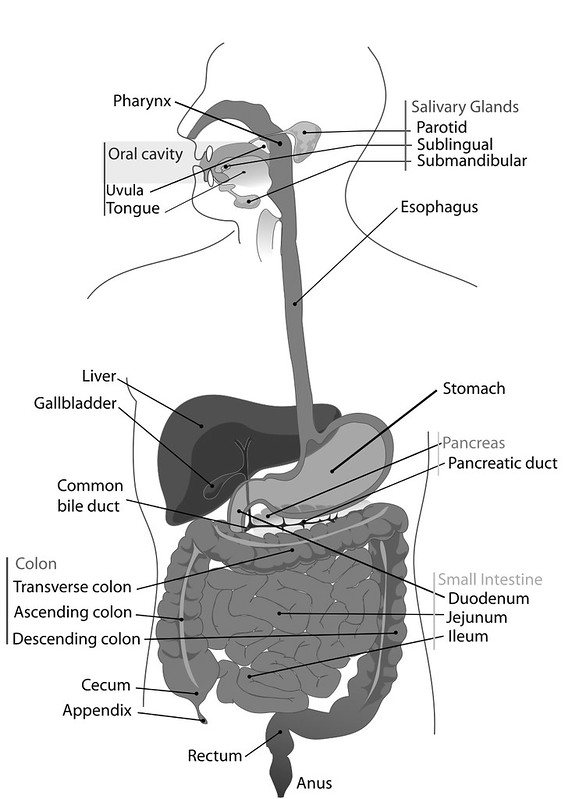
Digestion 101: A North to South Process
Here we are, at the end of the road. The large intestine is the final step in the process of digestion. By this point you probably more than understand the concept of digestion being a north to south process. We have talked about it at length starting first the brain and the mouth, and the importance of being in a parasympathetic state and properly chewing your foods, then of course the stomach and the dire need for proper hydrochloric acid production, how the accessory organs, the pancreas, liver and gallbladder continue the process of digestion, releasing bile, enzymes, various hormones and allowing the small intestines to finish digestion but more importantly do it’s very important job of assimilating nutrients and finally last but not least, the large intestine.
See Part One: The Brain and The Mouth
See Part Three: The Accessory Organs: Pancreas, Gallbladder and Liver
See Part Four: The Small Intestine
How it Should Work
The large intestine, or the bowel, is compromised of 3 sections, the cecum, colon and the rectum. The leftover chyme from the small intestines, passes through the illeocecal valve and first into the ascending colon. At this point in a healthy digestive system, what is left as chyme (the digested food) after the small intestines, is indigestible fibers, lots of water, sloughed off cells and bile. The large intestine is all about absorption and recycling.
As in the esophagus and the small intestine, the contents of the large intestine are pushed forward by a sequence of muscular contractions called peristalsis (a type of motility or muscular movement). After passing through the illececal valve the remains travels from the ascending colon, across the transverse colon where waste forms, into the descending colon, to the sigmoid colon and then the stool moves out of the body.
-
Digestion 101: A North to South Process // Part 4: The Small Intestine

Digestion 101: A North to South Process
As we continue more south in digestion, after first the brain and the mouth, then the stomach we move from the first part of the small intestines, the duodenum and it’s interaction with the accessory organs, the pancreas, liver and gallbladder and into the function of the small intestine.
After we leave the duodenum, the small intestine is less about the actual process of digestion, from a sense of breaking down the food we eat and it is more about the assimilation and absorption of nutrients.
The first part of the small intestines, the duodenum, acts more as a part of the stomach than the small intestine and the jejunum, ileum and villi are responsible for assimilation.
See Part One: The Brain and The Mouth
See Part Three: The Accessory Organs: Pancreas, Gallbladder and Liver

How it Should WorkThe small intestines have a dual role as an organ and a gland.
As we talked about in the previous post, The Accessory Organs – The Pancreas, Gallbladder and Liver, the small intestine releases mucous to keep things moving and it also releases two hormones: secretin and cholecystokinin.
Secretin stimulates the pancreas to release bicarbonate to lower the pH of the chyme and pancreatic juice. The CCK stimulates the gallbladder to release bile (to read more about these processes please see post #3).
By the time that the chyme has left the duodenum, thanks to the processes of the accessory organs, the chyme should be almost entirely digested.
- The carbohydrates have been broken down into glucose molecules
- Proteins are broken down into amino acids and polypeptides
- Fats are broke down into fatty acids and glycerol molecules
Peristalsis, a series of wave-like muscle contractions moves these absorbable molecules into the jejunum and the ileum, the middle and end parts of the intestine.
Within the small intestines, we have millions of villi, tiny finger-like projections that protrude from the epithelial lining of the small intestines. These villi and their microvilli absorb the nutrient molecules directly into the bloodstream, where they are carried throughout the entire body.
-
Digestion 101: A North to South Process // Part 3: The Accessory Organs – Pancreas, Gallbladder and Liver
Digestion 101: A North to South Process
As we continue more south in digestion, after first the brain and the mouth and then the stomach we move onto the accessory organs, the pancreas, liver and gallbladder
As we move further south from the stomach, while the small intestines are next in line for the food, but we first take a small pause/detour to discuss “the accessory organs of digestion”. The pancreas, liver and gallbladder, each play a very important role in the digestive process and each can be affected with their own dysfunction as well.
The stomach, small intestines and large intestines are all part of the system of digestion we call “the alimentary canal”, “the gut tube” or “digestive tube”. Between each of these organs we have valves or sphincters that keep the food where it is supposed to be and move it along when the time and the environment is right. These accessory organs are not a part of this tube or system but they play a major role in the process.

There is a synergistic and symbiotic relationship with the small intestines and these accessory organs, so we will discuss first how these play a role before we move into the function of the rest of the GI tract.
The duodenum is the start of the small intestine, but it almost acts more as part of the stomach, in it’s roles of breaking things down further playing a larger part in the process of digestion, vs the rest of the small intestine being less of a digestive organ and more about absorption or assimilation.
See Part One: The Brain and The Mouth
THE PANCREAS, GALLBLADDER AND LIVER:
How It’s Supposed to Work
When the pH of the chyme (the digested food moving from the stomach into the small intestines) is in it’s normal range, 1.5 – 3.0 , which we talked about in the stomach post. This is very acidic and necessary to the stomach performing it’s duties. As it hits the pyloric valve and into the duodenum with it’s proper pH, this is where the roles of the accessory organs come into play. This highly acidic chyme is what triggers these functions.
The duodenum no longer wants this highly acidic chyme and in order for the enzymes to work correctly it has to take that chyme to a neutral pH of 7.0. This happens by way of sodium bicarbonate, which is released by the pancreas to alkalinize the chyme. This release of sodium bicarbonate is signaled by secretin, a hormone released by the small intestines, which as you might have already guessed, is triggered by the (proper) acidic level of the chyme, that pH of 1.3 – 5. (Ahem, here is that reminder to look north, if the stomach isn’t producing proper HCl, then none of this will function properly, either!!)
-
Digestion 101: A North to South Process // Part 2: The Stomach
Digestion 101: A North to South Process
As we continue more south in digestion, after the brain and the mouth, next up we have the stomach. Before we get started, I wanted to remind you that you will constantly hear me reiterate as we go through this step-by-step process to “always look north” and I want you to truly understand what this means, exactly. I am referring to the fact that often times dysfunction that presents itself from further down the line, is actually due to a malfunction more north. For example, as you will read about in this second post and as we talked about briefly in the first, (the brain and the mouth), if you are eating in a stressful state and your body doesn’t make the necessary switch to that parasympathetic mode (rest and digest), then before your stomach ever had a chance to function properly, the brain basically threw it under the bus. So, while the symptoms may present themselves in the stomach (or even further south) it may not make sense to supplement, treat or approach the symptoms specifically until we instead move more north to investigate if these malfunctions are treatable with just some simple lifestyle and mindset shifts.

This is not at all to say that all digestive dysfunction starts in the brain, that would make my job and my own healthy journey so much simpler. In fact, there are many reasons why dysfunction can exist, as you will see, but beginning the investigative process at the start, way up north, allows us to rule out the possible, more simple resolutions before we move deeper and into more challenging treatments.
See Part One: The Brain and The Mouth
THE STOMACH:
How it’s Supposed to Work
After we chew our food, it turns into what we call a “bolus”. The bolus passes through the esophagus and the cardiac valve (the lower esophageal sphincter) and the bolus then enters our stomach, At this stage gastric juices are released. I like to think of the stomach as a blender. Mucous, pepsin and hydrochloric acid are all released for the “churning and burning” stage of digestion. Both mechanical and chemical breakdown happens at this stage.
The hydrochloric acid (HCl) being the most important of these gastric juices as it creates an acidic environment that disenfects the food and aids in the breakdown. Despite popular belief the stomach is absolutely meant to be acidic. In a healthy individual the pH of the stomach during digestion should drop to 1.5 to 3. We have a thick mucosal layer in our stomach, that acts as a barrier that protects the cells from the acid.
-
Digestion 101: A North to South Process // Part 1: The Brain and the Mouth
As many of you know, my digestion has been the source of much on and off distress over many years of my life. While I found the greatest relief by going 100% gluten-free after discovering an intolerance over 11 years ago, my digestion in the time since, has still not been without challenge and discomfort and at times, straight pain. As I began the journey to heal my body of my newly discovered autoimmune condition last year, we first needed to address my still, not-so-great digestion. This foundational approach to the healing of consequences, such as autoimmune conditions, by first treating digestive dysfunction – is a common approach, especially for functional and naturopathic doctors and nutritionists, who know that without properly functioning digestion, we cannot expect to ever find health and vitality. Without proper digestion we can be sure that we aren’t going to adequately assimilate the necessary nutrients through the food we are eating, no matter how healthy we eat and no matter what supplements or medications that we take. In working with a naturopathic doctor, we discovered early last year that I was struggling with leaky gut, and even found at the start of this year, after a year of dealing with the leaky gut, yet still not feeling 100%, that I had an unwelcome parasite and an excess of pathogenic bacteria (both likely the results of having a leaky gut, for who knows how long). It’s been a long year, to say the least.
Through the process of my own personal journey, I have and I continue to learn so much about digestion. This personal, ongoing path towards healing and all of the knowledge and know-how I have collected along the way, is what ultimately prompted me to go back to school to become a certified nutritional therapist. I wanted to truly learn and understand all of this in much deeper and fuller way, to allow me to not only continue to help and heal myself and my loved ones, but to also share this knowledge with others and hopefully help them help themselves, in the process.
So much of what we have been learning in school, about nutrition and more specifically, digestion, has really struck home for me. Much of what we cover are very simple concepts that I truly believe most people need to understand, and support – all of this ultimately has inspired me to share with you guys more about the process of digestion! I know so very many of you, too, are plagued by these varying epidemic levels of dysfunction and I want to empower you with the knowledge to overcome them.
In this series of posts I am going to break down the north to south process of digestion, covering how proper function should occur and also discussing the typical dysfunctions that can derail this process along the pathway. I am also going to offer advice, tips, foods, supplements and other remedies, both traditional and not, to hopefully bring you healing.
Digestion 101: A North to South Process
Digestion is a north to south process, it begins in the brain and ends in elimination. More often than not, while we feel the signs and symptoms of poor digestion further down the line, in the stomach or the upper or the lower GI, simply treating those symptoms with band-aid-like approaches, natural or not, likely won’t get to the root of the problem. To properly address any digestive dysfucntion and truthfully many other nutritional deficiencies, dysfunctions, illness, allergies, etc – we must first start up north, acknowledging possible dysfunction and continue moving south until we address all possible culprits.
Just as proper digestion is a north to south process, so is dysfunction. So, to properly understand and diagnose digestive dysfunction, we have to start all the way at the top, up north in the brain. Yes, the brain is one of THE most crucial elements of digestion. One of the most important take-aways, I hope this first post gives you, is an understanding that remedying digestive malfunction and dysfunction doesn’t always rely on supplements and major dietary changes, oftentimes if can be simple lifestyle changes that can make all the difference in the world. All of the tips I offer in this first post, won’t cost you a dollar, you don’t need to track down supplements or special foods and in fact, you can start today. So, let’s peel back the layers of digestion, before we supplement our way out and instead, let’s support the process as it’s supposed to happen.
As a side-note, these northern-most points in the digestive process are probably my most favorite to cover, they are the starting points of the entire process, but they also require so little, in terms of support.




